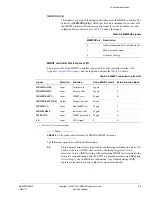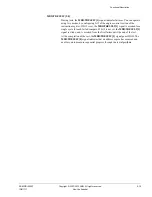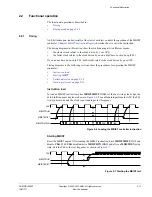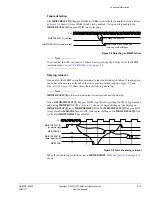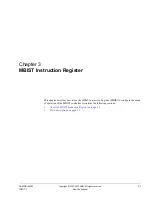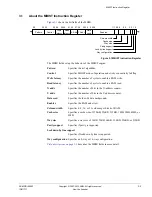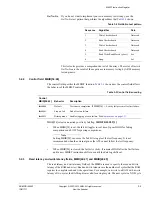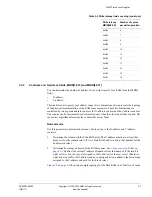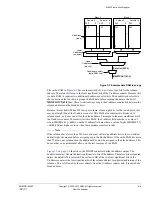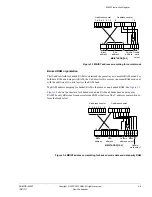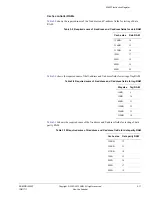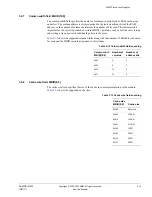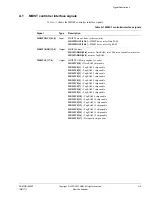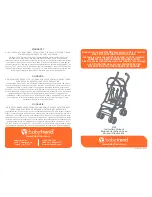
MBIST Instruction Register
ARM DDI 0402F
Copyright © 2007-2010 ARM. All rights reserved.
3-7
ID011711
Non-Confidential
3.2.4
Y-address and X-address fields, MBIR[36:33] and MBIR[40:37]
You can determine the number of address bits you must specify for a RAM from the MBIR
fields:
•
X-address
•
Y-address.
This enables you to specify your address range in two dimensions, this represents the topology
of the physical implementation of the RAM more accurately. These two dimensions are
controlled by two separate address counters, the X-address counter and the y-address counter.
One counter can be incremented or decremented only when the other counter has expired. The
chosen test algorithm determines the counter that moves faster.
Normal mode
Use this procedure to determine how many bits to assign to the X-address and Y-address
counters:
1.
Determine the column width of the RAM array. The Y-address must have at least that
many bits for the column select. If it is a Data RAM, add two bits to that number for the
doubleword select.
2.
Determine how many address bits the RAM requires. See
Cache controller RAMs
on
page 3-11
. Subtract the current Y-address bit number from that number. If the result is
eight or fewer bits, they are all assigned to the X-address for the row select. Otherwise,
eight bits are used for the X-address and any unassigned bits are added to the bits already
assigned to the Y-address and used for the block select.
Figure 3-2 on page 3-8
shows an example topology for the Data RAM in a 256K level-2 cache.
0b0101
6
0b0110
7
0b0111
8
0b1000
9
0b1001
10
0b1010
11
0b1011
12
0b1100
13
0b1101
14
0b1110
15
0b1111
16
Table 3-5 Write latency field encoding (continued)
Write latency
MBIR[48:45]
Number of cycles
per write operation



